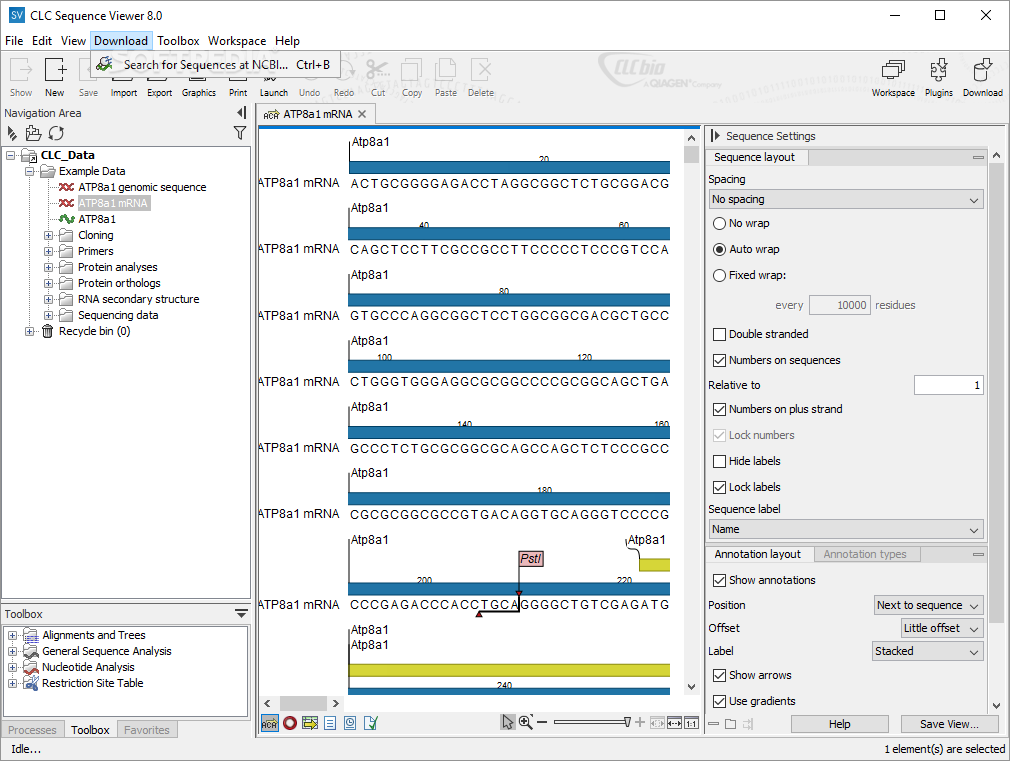

Wasabi - (Andres Veidenberg, University of Helsinki, Finland) is a browser-based application for the visualisation and analysis of multiple alignment molecular sequence data.

The nanopore sequencing process is based on the transit of a DNA molecule through a nanoscopic pore, and since the 90s is considered as one of the most promising approaches to detect polymeric molecules. VerAlign multiple sequence alignment comparison is a comparison program that assesses the quality of a test alignment against a reference version of the same alignments. In 2014, Oxford Nanopore Technologies (ONT) launched a beta-testing program that supplied the scientific community with the first prototype of a nanopore se-quencer: the MinION.

studies at the University of Wisconsin-La Crosse and a Master of Science Degree in. Thanks to this program, several research groups had the opportunity to evaluate the performance of this novel instrument and develop novel computational approaches for analyzing this new generation of data.
#Clc sequence viewer einstein university software
Statistical software (Prism) and genomic analysis tools (CLC bio). Despite the short period of time from the release of the MinION, a large number of algorithms and tools have been developed for base calling, data handling, read mapping, de novo assembly and variant discovery. Here, we face the main computational challenges related to the analysis of nanopore data, and we carry out a comprehensive and up-to-date survey of the algorithmic solutions adopted by the bioinformatic community comparing performance and reporting limits and advantages of using this new generation of sequences for genomic analyses. Our analyses demonstrate that the use of nanopore data dramatically improves the de novo assembly of genomes and allows for the exploration of structural variants with an unprecedented accuracy and resolution. However, despite the impressive improvements reached by ONT in the past 2 years, the use of these data for small-variant calling is still challenging, and at present, it needs to be coupled with complementary short sequences for mitigating the intrinsic biases of nanopore sequencing technology.The genomes of humans, as well as many other species, are interspersed with hundreds of thousands of tandem repeats of DNA sequences. Those tandem repeats located as codons within open reading frames encode amino acid runs, such as polyglutamine and polyalanine. Using CLC Genomics Workbench 12.03, sequences were trimmed from adaptor, paired and good quality sequence read pairs were mapped to the Homo sapiens GRCh38 reference genome (Hg38). Tandem repeats have not only been implicated in biological evolution, development and function but also in a large collection of human disorders. Transcripts counts were normalised and differential gene expression analysed using the RNAseq Analysis Module of CLC Genomics Workbench 12.03. In Tandem Repeats in Genes, Proteins, and Disease: Methods and Protocols, expert researchers in the field detail many methods covering the analysis of tandem repeats in DNA, RNA and protein, in healthy and diseased states. This will include molecular genetics, molecular biology, biochemistry, proteomics, biophysics, cell biology, and molecular and cellular approaches to animal models of tandem repeat disorders.
#Clc sequence viewer einstein university series
Written in the highly successful Methods in Molecular Biology™ series format, chapters include introductions to their respective topics, lists of the necessary materials and reagents, step-by-step, readily reproducible laboratory protocols, and key tips on troubleshooting and avoiding known pitfalls.Īuthoratative and Practical, Tandem Repeats in Genes, Proteins, and Disease: Methods and Protocols aids scientists in continuing to study the unique methodological challenges that come from repetitive DNA and poly-amino acid sequences.


 0 kommentar(er)
0 kommentar(er)
